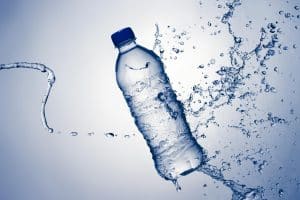How Is Water Quality Testing Done?
Water quality testing is carried out to determine the quality of water. The process involves identifying the chemical parameters of water. Testing for contaminants is also done to assess its impact on human health. This article explores the methods and costs associated with conducting tests. The information presented here will help you understand the importance of water quality and the potential health risks of contaminants.
(Looking for water conditioning services? Contact us today!)

Chemical parameters of water quality
Water quality testing is a process used to determine whether water is safe for human consumption. It determines the chemical, physical, and biological parameters of a given water body. These parameters are important because they can affect human health. Depending on the level of contamination, they can be measured by various methods.
Chemical parameters of water quality testing include dissolved oxygen content and pH, which determine whether a water body is healthy or unhealthy. Depending on the parameters, treatment might be necessary. Biological parameters, on the other hand, include the presence of bacteria, algae, and viruses.
Methods of testing for contaminants
Testing for contaminants in water is important for public and private systems. Public drinking water systems are regulated by the U.S. Environmental Protection Agency, but private water systems must follow their own rules to keep their water safe for humans. Some contaminants, such as bacteria, can be harmful. These bacteria are common in untreated surface water, vegetation, and warm-blooded animals. Total coliform counts (TCL) are used to determine water quality. A total coliform count below 10 is considered safe for human consumption.
Several tests are available to test for contaminants in water. The Total Coliform Bacteria test is a general indicator for sewage and animal waste contamination. Total dissolved solids and pH values should not vary over time. Testing for these contaminants is a good idea at least once a year.
Impact of water quality on human health
The impact of water quality on human health is an important issue. Poor quality water can cause illness and death. A large portion of the burden of disease around the world is attributed to the presence of microbial organisms in drinking water. For example, cholera is responsible for the deaths of 21,000 to 143,000 people worldwide each year.
Fortunately, there are many ways to learn about water quality. Government services provide links to official water quality reports and non-government organizations have databases of public reports. In the US, most public water systems publish reports on the quality of their water regularly. These reports will detail what is in the water and what the health impacts are. In North Dakota, the North Dakota Department of Environmental Quality works closely with public water systems to make sure they comply with the Safe Drinking Water Act. However, private wells are not covered by the Act.
Cost of testing
The cost of water quality testing is based on a combination of equipment and consumables. Generally, it ranges from $8.4 to $16,317 for a microbial test, but this cost can be lower or higher depending on the type of testing required. Several factors contribute to the costs, including: the materials used, transportation, labor, and logistics.
The costs of water quality testing are not well understood at the national level. No study has investigated how much it costs to conduct tests in different locations. Cost is considered to be a major barrier to monitoring water quality in different settings.

